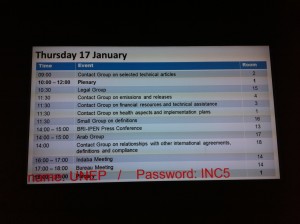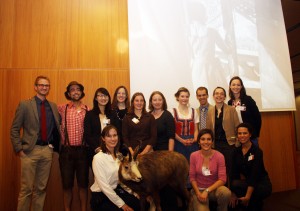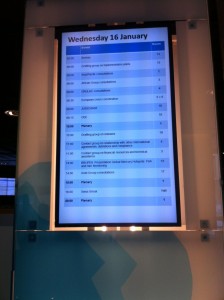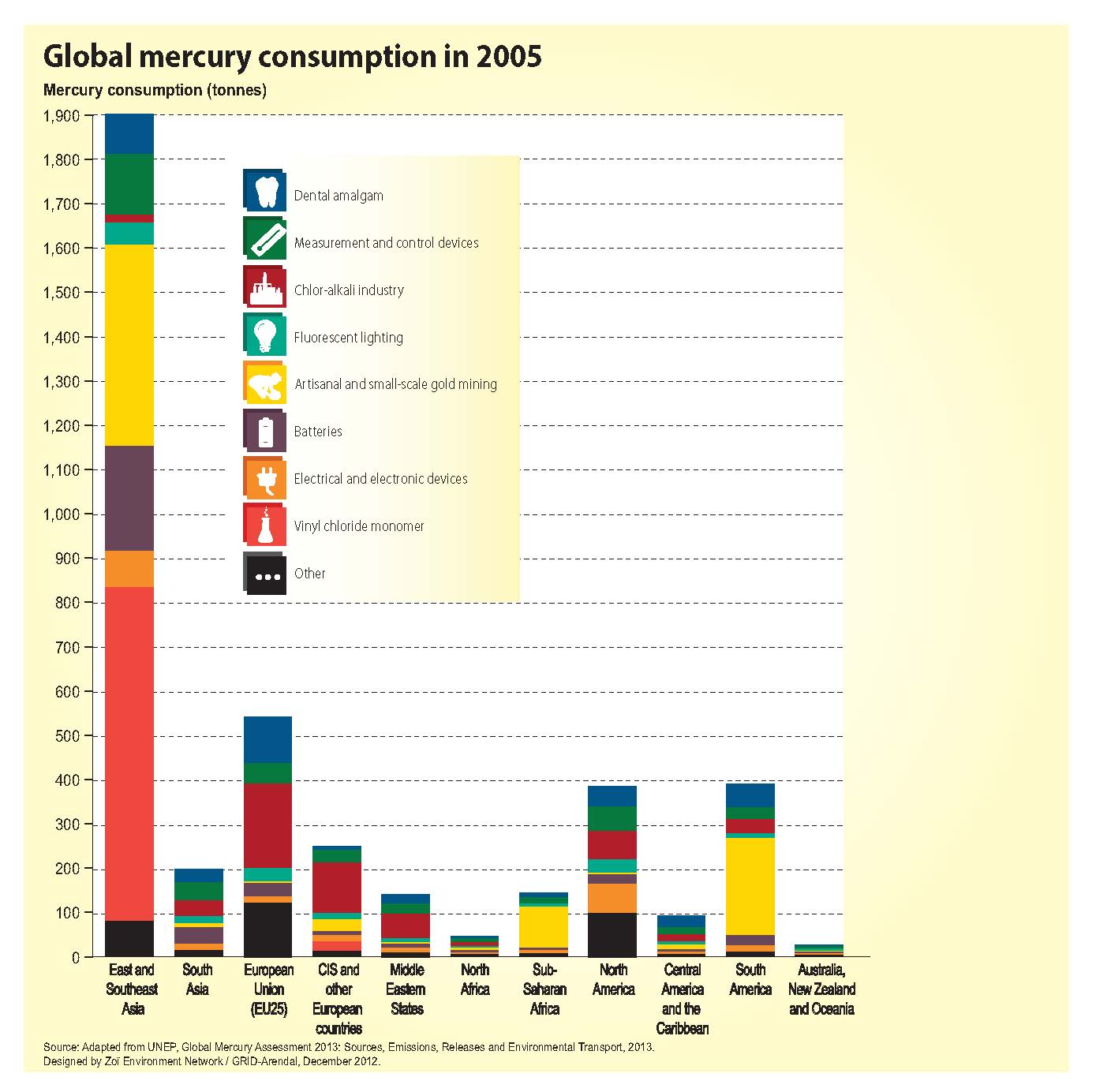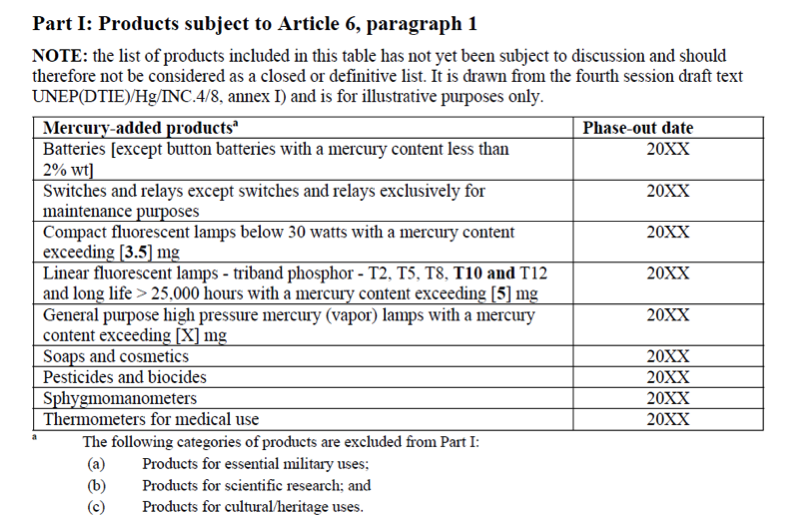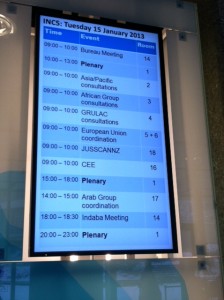by Amanda Giang and Philip Wolfe
Amanda and Philip here with a handy guide to navigating the world of intergovernmental negotiations. In Part 2, we looked at the problem of treaty implementation. In Part 3 we define some key concepts and themes when it comes to institutions and implementation.
While most of the documents for INC5 are in English, it can sometimes feel like they are written in an arcane, impenetrable language. It would take an entire dictionary (or at least a decent glossary) to really unravel all of the words and acronyms of the mercury negotiations. Here, to at least get you started, we are going to highlight four terms that will come in handy when thinking about global institutions and treaty implementation.
Bureaucratic politics
Is policy making really just well informed rational parties figuring out what’s best for the common good, or is there also an aspect of it that’s a little less… altruistic? Graham Allison, an influential political scientist, argued that policy decisions are also shaped by power struggles between different actors within a bureaucracy. These actors have different bureaucratic interests, and want to extend their influence where possible. You might not see the term “bureaucratic politics” often in official documents or hear it in floor discussion, but its important to know that it’s a strong undercurrent to the whole proceedings.
How might bureaucratic politics show up in the mercury treaty negotiations? First, there’s a question of who should be (and has the authority to be) responsible for what. For example, can the mercury treaty address health aspects explicitly (Article 20 b, up for consideration), or should this solely be the purview of the World Health Organization? The US, the EU, and Canada have taken a stance against explicitly including health concerns in the treaty, while broadly supporting global health in other domains. Some human rights groups have attacked this position as being more about bureaucratic politics than reasonable decision making in the world’s best interest.
At the level of the treaty itself, how are responsibilities going to be divided amongst committees and subsidiary bodies? What committees are needed (e.g., implementation, compliance, scientific assessment)? Who gets to sit on these committees? The answers to these questions may be as much about bureaucratic politics as they are about mercury pollution.
Common but differentiated responsibilities
In 1992, the UN held a Conference on Environment and Development (often called the Earth Summit), and established a set of 27 principles to guide sustainable global development—the Rio Declaration. One of these principles refers to nations’ common but differentiated responsibilities (CBDR). This phrase has since become a standard part of many environmental treaties and, despite being very compact, it packs a mean punch in terms of political and equity implications. CBDR acknowledges that, while working towards common environmental goals, different parties have different responsibilities for two reasons:
1. Different states have had different contributions to global environmental degradation. Developed countries have typically, over time, contributed more to environmental degradation than less developed nations as a result of their historical development trajectories and current consumption patterns.
2. Developed countries command significant financial and technical resources (sometimes due to environmentally exploitative development trajectories).
The Precautionary Principle
Another legacy of the Earth Summit is the Precautionary Principle. The Rio Declaration, principle 15, states: “Where there are threats of serious or irreversible damage, lack of full scientific certainty shall not be used as a reason for postponing cost-effective measures to prevent environmental degradation.” Since the Earth Summit, the principle has been invoked in many regulatory contexts for both environmental and health reasons, often with slightly different definitions. At its heart though, the principle shifts the burden of proof: those who want to take preventative action don’t need to definitively prove harm. Instead, the burden falls on those conducting potentially environmentally or health threatening activities to prove that their actions are benign.
An interesting procedural note: the Preamble of the text of the mercury treaty regulation has yet to be formally discussed. Currently in the draft text, there is a suggestion for including a reaffirmation of the Precautionary Principle from the Rio Declaration, but there’s no indication of how that reaffirmation could be written.
Transparency
Transparency may be the easiest concept on our list to define, but its no less complex or important in implementing a global regulatory instrument. Transparency is the openness, communication extent, and accountability of signatory states. Transparency promotes regulatory compliance because it allows for coordination between parties, it provides reassurance to certain parties that other parties are following through on their responsibilities, and it disincentives actors from considering non-compliance. The UN highlights the importance of transparency with respect to success of achieving good global governance.
Transparency is a crucial part of the mercury negotiations, especially with respect to reporting and monitoring emissions. One of the issues that remains to be settled is the level of transparency built into the treaty regarding trade. Because some parties involved in the mercury negotiations have ratified the Basel Convention and others have not, trade is likely to be especially tricky to reach agreement on.
Now you’re armed with a couple key terms that, we hope, will help you make sense of the current mercury negotiations. Put this knowledge to work by following our blog and Twitter (@MITMercury) as we track the developments of the INC5.

